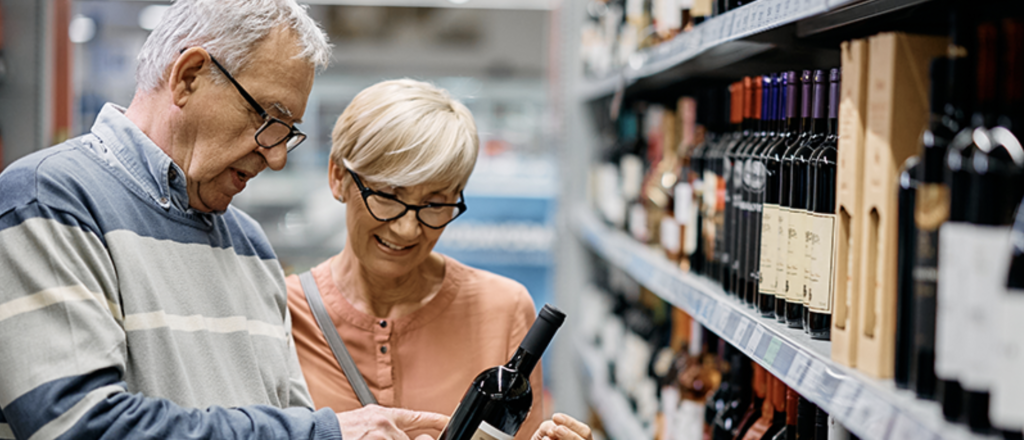A wine tasting is an excellent way for off-premise alcohol vendors to learn customer preferences, launch or nurture a loyalty program or mailing list, and sell products. In this post, we’ll provide practical tips for planning, marketing, and hosting a tasting event.
Hosting a tasting? Let your customers know by email or social media.
Planning your tasting
It’s tempting to dive right into beverage selection but take a moment to consider your target audience. What is their level of knowledge? What do they expect to gain from the tasting? How many people in your community fit these criteria? This will tell you what products and materials to prepare, what your budget will be, and what themes might work best.
Now it’s time for the beverages. Some additional factors to consider when making this decision: Are there any distributors willing to contribute? How will you outline your horizontal tasting (horizontal being comparing similar beverages)?
Next, how large will your event be? It may seem logical to want it to be as large as possible, but if your goals are, for example, to launch a loyalty program or appeal to a niche audience, it is far more important to have the correct attendees rather than more of them. Your space and budget are two of the most obvious factors to consider when setting an attendance goal, but the style of your space may lend itself to a certain type of event as well, such as a more relaxed and intimate gathering.
Around ten participants is a good target for a smaller, more intimate event. That said, no-shows can be a factor, especially before you have established a regular event or loyalty program, so calculate accordingly. Wine tastings with over a hundred attendees can be highly successful but remember to plan carefully to keep the experience beneficial and memorable for your guests.
Will your event have a theme? A theme helps elevate your marketing, attract the correct audience, manage invitee expectations, and coordinate your staff and preparations. Factors to consider when deciding on a theme include the number and types of beverages, the perceived exclusiveness of the event, and the number of guests.
How much product should you plan to sell? For example, you may set a goal of 30% of your attendees purchasing product. How should that affect your planning? You may want to consider a door charge that guests can use as a credit toward purchases. You can also use the door charge to encourage invitees to bring friends, by offering additional discounts for each guest.
A final consideration: do you need a professional sommelier? A professional can help prepare a wine list, pair drinks with the right foods, and lead discussion or provide context about the beverages as they are being tasted.
Looking to put a spin on a traditional tasting? Two common twists on tastings are classes (excellent for launching a loyalty program from a handful of people) or blind tastings (for a more fun-filled experience).
Marketing your tasting event
Some tactics to consider when marketing your event: customer list (don’t have one? Tastings are an ideal place to start); paid social media targeting your local geography; partnering with a local group like a book club or charity; and flyers distributed with purchases in your establishment. Encourage RSVPs by, e.g., offering a small credit toward the door charge to anyone who shows a confirmation (printed or on their phone).
Preparing for the event
Be sure to stock sufficient drinks for the event. A rule of thumb for a wine tasting would be at least 3-5 types of wines, with one bottle of each wine per 12 guests.
Other materials and equipment to consider:
- spring water and/or unsalted crackers to cleanse palates between rounds (avoid mineral water)
- enough glasses to allow for multiple drinks per round plus breakage
- ice, if you’ll be featuring beer or white wine.
- spit buckets
- paper and pens so guests can keep track of what they’re consuming (consider adding the store’s logo, name and contact information on each sheet of paper)
- wine-tasting scorecards, if applicable
- deli meats, cheeses, breads, and fruits
- tables and chairs for the tasting, mingling, and/or eating
- a sign-in sheet or laptop to collect participants’ contact information
Note: Snacks and aromatic decorations are an opportunity to shape the experience for guests. Consider foods or organic accessories like chocolate, butter, vanilla, marmalade, tobacco, oak, apples, rose, almonds, berries, and cinnamon.
Hosting the tasting
Consider providing the beverages in sets of two, side by side, to highlight the contrast in flavors. Order the tasting from lowest to highest alcohol content. Put whites ahead of reds, as well as light wines ahead of full-bodied wines.
Draw attention to the appearance of each sample, then aroma, and finally taste. Remember to caution guests not to drink the entirety of each pour, but to take advantage of the buckets. Provide tips and context like drink information throughout to keep attendees focused.
Make sure you are prepared to coach attendees on how to properly “smell” a sample: 1) place the glass at chin level; 2) pull it up slowly while inhaling gently, keeping your lips slightly apart to circulate throughout the sinuses and across the tongue; 3) take a sip and coat the entire mouth, then swallow. Use additional sips to test different areas of the palate and remind guests that each of them will have a unique experience. Remember to seek feedback, both to engage your guests and to gain valuable insight into how they approach their wine or spirits. Dialogue can also help you identify prospects for loyalty programs, direction for future events, and the best products to offer for sale at the event and at your establishment. If a customer leaves without making a purchase, ask them what they prefer as a wine or spirit consumer. A tasting is your private focus group: learn all you can!
